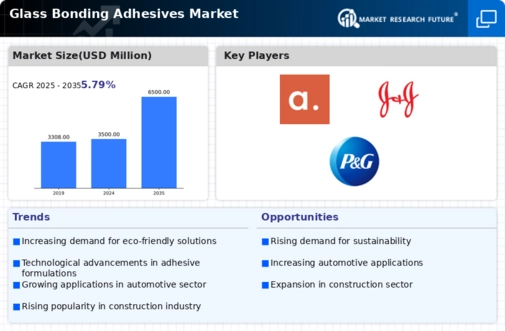Market Analysis
In-depth Analysis of Glass Bonding Adhesives Market Industry Landscape
The Glass Bonding Adhesives Market is a dynamic and evolving sector within the adhesive industry, driven by various market dynamics. These adhesives play a crucial role in bonding glass substrates in a variety of applications, including automotive, construction, and electronics. One of the key factors influencing the market dynamics is the growing demand for lightweight and high-performance materials in industries like automotive. As manufacturers strive to reduce vehicle weight for better fuel efficiency, the adoption of glass bonding adhesives has surged, replacing traditional mechanical fastening methods.
Additionally, the construction industry has witnessed a significant shift towards the use of glass in modern architectural designs. This trend has fueled the demand for reliable bonding solutions, boosting the glass bonding adhesives market. The ability of these adhesives to provide structural integrity while maintaining transparency and aesthetics aligns well with the architectural requirements of today's structures. Furthermore, the expanding electronics industry has also contributed to the market dynamics, with glass bonding adhesives being essential in the assembly of electronic devices, such as smartphones and tablets.
The market dynamics are further shaped by technological advancements and innovations in adhesive formulations. Manufacturers are investing in research and development to enhance the performance characteristics of glass bonding adhesives, such as adhesion strength, durability, and resistance to environmental factors. This continuous innovation has led to the development of next-generation adhesives that meet the evolving needs of end-users in various industries.
The regulatory landscape also plays a pivotal role in the market dynamics of glass bonding adhesives. Stringent environmental regulations and the increasing focus on sustainability have prompted adhesive manufacturers to develop products that are eco-friendly and compliant with global standards. As a result, there is a growing emphasis on the use of low-VOC (volatile organic compound) and solvent-free formulations in glass bonding adhesives, aligning with the industry's commitment to reducing its environmental footprint.
Global economic conditions and regional factors also contribute to the market dynamics. Economic growth, industrialization, and infrastructure development in emerging economies drive the demand for glass bonding adhesives. Additionally, factors like population growth, urbanization, and changing consumer lifestyles influence the construction and automotive sectors, subsequently impacting the market for glass bonding adhesives.
Competitive dynamics within the industry are characterized by a mix of established players and new entrants. Major adhesive manufacturers continually engage in strategic initiatives, such as mergers, acquisitions, and partnerships, to strengthen their market position and expand their product portfolios. This competitive landscape fosters innovation and product development, further intensifying the market dynamics






Leave a Comment